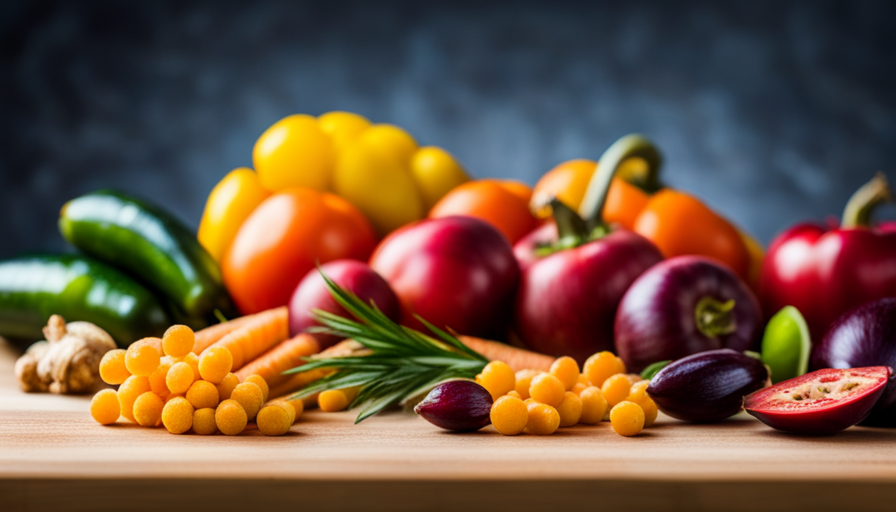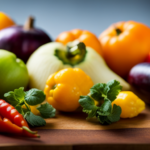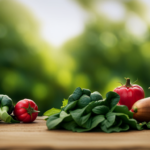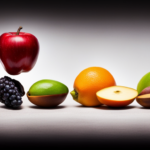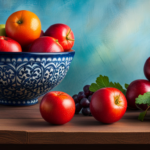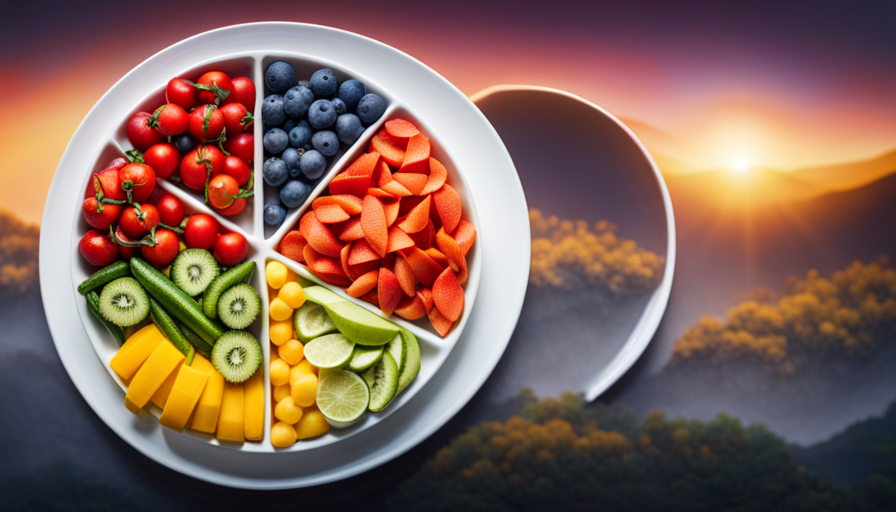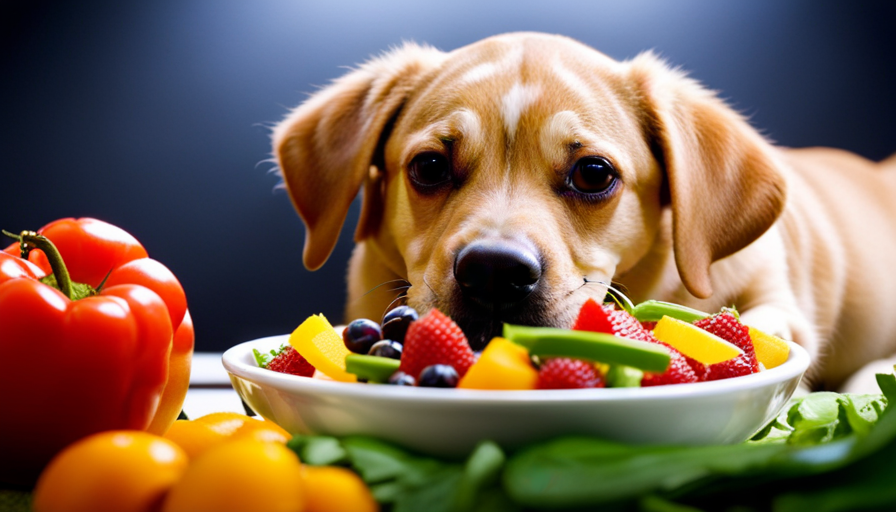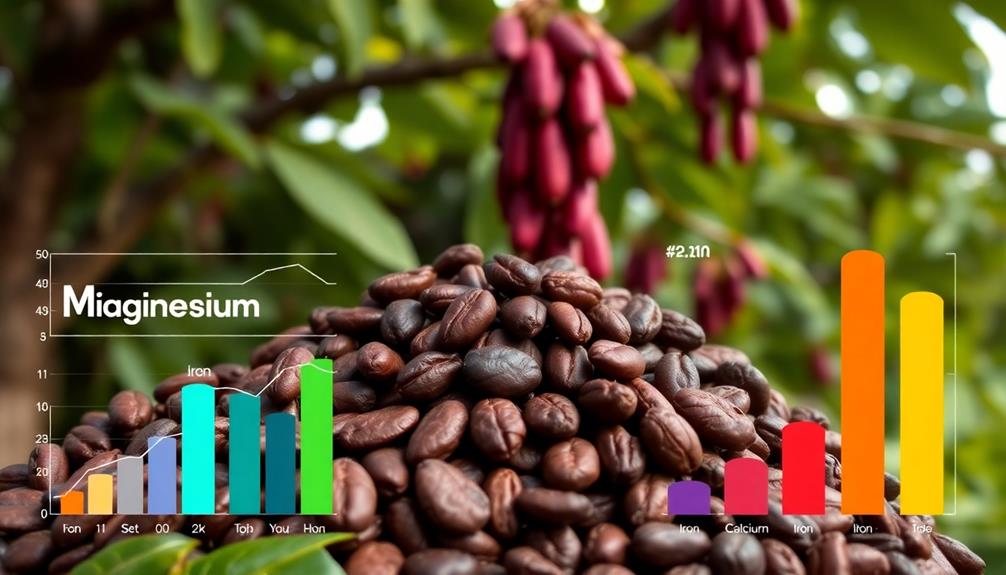Did you know that nearly 10% of individuals have a strong desire for raw food? That’s right. A significant portion of the population has a constant hunger for uncooked, nutrient-rich foods. These individuals are part of a growing trend known as the Raw Food Movement.
Raw food enthusiasts believe that consuming unprocessed, plant-based foods in their natural state can provide numerous health benefits. From increased energy levels to improved digestion, proponents of this lifestyle swear by its transformative effects.
In this article, we will delve into the origins of the Raw Food Movement and explore the nutritional benefits of consuming raw foods. We will also discuss the different types of raw diets and address common misconceptions surrounding this way of eating.
Additionally, we will provide practical tips on how to incorporate more raw food into your diet and discuss the potential risks and precautions associated with a raw food lifestyle. So, if you’re curious about the psychology behind craving raw food and want to hear success stories and testimonials from those who have embraced this lifestyle, keep reading.
Key Takeaways
- Raw food enthusiasts believe in the health benefits of consuming unprocessed, plant-based foods, as raw food is rich in vitamins, minerals, and antioxidants.
- Raw food can lead to increased energy levels, improved digestion, and weight loss, and may have a positive impact on mental health, reducing anxiety and improving focus.
- Raw food diets include raw vegan, raw animal-based, and raw paleo options, providing a variety of choices for individuals who crave raw food.
- Proper food handling is crucial to prevent foodborne illnesses, and transitioning to a raw food diet requires adjustments and planning to ensure nutrient deficiencies are avoided.
The Origins of the Raw Food Movement
The raw food movement has its roots in the early 20th century, when health enthusiasts started embracing the idea of consuming uncooked and unprocessed foods. This movement is not just a passing trend; it has an evolutionary aspect that dates back to our ancestors. Our early human ancestors relied on raw foods for survival, and some argue that our bodies are still adapted to this type of diet. Raw food advocates believe that cooking food destroys essential nutrients and enzymes, and that consuming raw foods can improve digestion and overall health.
Cultural influences have also played a significant role in the development of the raw food movement. Many ancient cultures, such as the Chinese and Indigenous peoples, have long traditions of consuming raw foods. These cultural practices have been passed down through generations and have influenced the beliefs and choices of individuals seeking a raw food lifestyle.
Today, the raw food movement continues to grow in popularity, with an increasing number of people craving raw foods. They seek out fresh fruits, vegetables, nuts, and seeds in their natural state, believing that this is the key to optimal health. While the scientific evidence supporting the benefits of a raw food diet is limited, many individuals have experienced improvements in their energy levels, digestion, and overall well-being by embracing this lifestyle.
So if you find yourself craving raw foods, know that you are part of a movement that has deep roots in both our evolutionary history and cultural traditions.
Understanding the Nutritional Benefits of Raw Food
Exploring the world of uncooked ingredients reveals a wealth of nourishing goodness. When it comes to raw food, the nutritional value and health benefits are undeniable. Raw food enthusiasts argue that cooking can destroy essential nutrients and enzymes, making raw food a better option for overall health.
Raw food is rich in vitamins, minerals, and antioxidants. These essential nutrients are crucial for maintaining optimal health and preventing chronic diseases. For example, raw fruits and vegetables are packed with vitamin C, which strengthens the immune system and promotes healthy skin. Additionally, raw nuts and seeds provide healthy fats, protein, and fiber, which can help regulate cholesterol levels and support heart health.
The health benefits of raw food extend beyond just the nutrients it contains. Many raw food enthusiasts claim that consuming raw food can lead to increased energy levels, improved digestion, and weight loss. Raw food is also believed to have a positive impact on mental health, with some individuals reporting reduced anxiety and improved focus.
While raw food may not be suitable for everyone, incorporating more raw food into your diet can offer numerous health benefits. Whether it’s adding a raw salad to your lunch or enjoying a refreshing fruit smoothie, embracing raw food can be a delicious and nutritious way to enhance your overall well-being.
Exploring Different Types of Raw Diets
Let’s dive into the fascinating world of various types of raw diets and discover the mind-blowing array of options available to fuel our bodies with nourishing goodness!
Raw food diets come in many different forms, each with its own unique benefits. One popular type is the raw vegan diet, which consists of consuming only plant-based foods in their raw, uncooked state. This diet is rich in fruits, vegetables, nuts, and seeds, providing a wide range of vitamins, minerals, and antioxidants.
Another type is the raw animal-based diet, where individuals primarily consume raw meat, fish, and eggs. Proponents of this diet claim that it provides essential nutrients, enzymes, and healthy fats.
There is also the raw paleo diet, which combines elements of raw veganism and the paleo diet. This diet focuses on consuming raw fruits, vegetables, nuts, seeds, and animal products, while avoiding grains and processed foods.
Regardless of the specific type of raw food diet you choose, the benefits of raw food are clear. Raw foods retain their natural enzymes, vitamins, and minerals, which can support digestion, boost energy levels, enhance immune function, and promote overall health.
So, whether you prefer a raw vegan, raw animal-based, or raw paleo diet, there’s a wide range of options available to help you fuel your body with nourishing goodness.
Common Misconceptions About Raw Food
Discover the surprising truths behind what you thought you knew about incorporating raw ingredients into your diet.
Many people believe that raw food is difficult to digest, but this is actually a common misconception. Raw food, especially fruits and vegetables, contains natural enzymes that aid in digestion. These enzymes help break down the food and make it easier for your body to absorb the nutrients. In fact, cooking food can destroy some of these enzymes, making it harder for your body to digest the food properly.
Another myth about raw food is that it lacks nutrients. However, studies have shown that raw food can actually be more nutrient-dense than cooked food. When food is cooked, it can lose some of its vitamins and minerals. Raw food, on the other hand, retains these nutrients, providing you with a healthier and more nutritious option.
Additionally, some people believe that raw food is bland and tasteless. This couldn’t be further from the truth! Raw food can be incredibly flavorful and delicious. By using fresh and high-quality ingredients, you can create vibrant and tasty dishes that will satisfy your cravings.
Raw food is not only easy to digest but also packed with nutrients and bursting with flavor. Don’t let these misconceptions hold you back from incorporating raw ingredients into your diet. Give it a try and discover the many benefits that raw food can offer for your health and well-being.
Tips for Incorporating More Raw Food into Your Diet
Are you looking for ways to add more freshness and nutrition to your meals without sacrificing flavor? Incorporating more raw food into your diet can be a great way to achieve this goal. Here are some tips to help you get started:
-
Quick and easy raw food snacks:
- Try snacking on fresh fruits and vegetables like apples, carrots, and cherry tomatoes. They’re packed with vitamins, minerals, and fiber.
- Make a simple and delicious fruit salad by combining your favorite fruits like berries, melons, and grapes. It’s a refreshing and nutritious snack option.
-
Raw food preparation techniques:
- Experiment with making raw vegetable noodles using a spiralizer. Zucchini, carrots, and cucumbers can be transformed into delicious pasta alternatives.
- Whip up a creamy and nutritious raw cashew sauce by blending soaked cashews with water, lemon juice, and a pinch of salt. It’s a versatile sauce that can be used as a dressing or dip.
Incorporating more raw food into your diet can be quick, easy, and enjoyable. By adding these simple snacks and trying out new raw food preparation techniques, you can boost the freshness and nutrition of your meals while still enjoying delicious flavors.
Raw Food Recipes for Beginners
If you’re new to incorporating more freshness and nutrition into your meals, try out these beginner-friendly raw food recipes that’ll tantalize your taste buds and nourish your body.
Raw food smoothie recipes are a great way to start your day with a burst of energy and nutrients. Whip up a green smoothie by blending together a handful of spinach, a ripe banana, a cup of almond milk, and a tablespoon of chia seeds.
Or, if you’re in the mood for something fruity, blend together a cup of frozen berries, a ripe mango, and a splash of coconut water for a delicious and refreshing treat.
When it comes to raw food meal planning, it’s important to have a variety of options to keep your meals interesting and satisfying. Try making a raw vegan salad by tossing together a mix of fresh greens, chopped vegetables, and a zesty lemon and olive oil dressing.
For a heartier meal, make raw zucchini noodles by spiralizing a zucchini and topping it with a homemade tomato sauce and a sprinkle of nutritional yeast for a cheesy flavor.
Incorporating more raw food into your diet doesn’t have to be complicated or boring. With these beginner-friendly recipes, you can enjoy the benefits of raw food while still satisfying your taste buds. So grab your blender and spiralizer, and get ready to create delicious and nutritious meals that’ll leave you feeling energized and satisfied.
Raw Food and Weight Loss: Myth or Reality?
Looking to shed those extra pounds? Transform your body with the power of raw food and unlock the secret to sustainable weight loss. Raw food has gained popularity as a weight loss strategy, but is it just a myth or a reality? Let’s dive into the evidence and find out!
Raw food is packed with essential nutrients and enzymes that promote good gut health. By consuming raw fruits, vegetables, nuts, and seeds, you provide your body with the fiber it needs to support a healthy digestive system. This can aid in weight loss by improving digestion and preventing constipation.
In addition to promoting gut health, raw food can also boost your energy levels. When you eat raw, unprocessed foods, you’re giving your body the fuel it needs to function optimally. The natural sugars found in fruits provide a quick energy boost, while the healthy fats in nuts and seeds provide sustained energy throughout the day.
To make the most of raw food for weight loss, consider incorporating these three strategies:
-
Focus on nutrient-dense foods: Fill your plate with a variety of colorful fruits and vegetables to ensure you’re getting a wide range of vitamins, minerals, and antioxidants.
-
Gradually transition to a raw food diet: Start by incorporating more raw foods into your meals and gradually reduce your intake of processed and cooked foods.
-
Listen to your body: Pay attention to how you feel after consuming raw foods. If you notice an increase in energy levels and overall well-being, it’s a sign that your body is benefiting from this lifestyle change.
Raw food can indeed support weight loss by promoting gut health and boosting energy levels. Incorporating raw foods into your diet can be a practical and effective way to achieve your weight loss goals. So why wait? Start reaping the benefits of raw food today and see the pounds melt away!
Potential Risks and Precautions of a Raw Food Diet
Eating a diet primarily composed of uncooked and unprocessed foods may pose potential risks and require certain precautions. While raw food enthusiasts tout the benefits of increased nutrient intake and improved digestion, it’s important to be aware of the potential health risks that come with consuming raw foods.
One major concern is the risk of foodborne illnesses. Raw foods, especially meats, eggs, and dairy products, can be contaminated with harmful bacteria like Salmonella or E. coli. Proper food handling is crucial to minimize the risk of these pathogens. It is essential to thoroughly wash all fruits and vegetables, avoid cross-contamination between raw and cooked foods, and ensure proper storage temperatures to prevent bacterial growth.
Another potential risk is nutrient deficiencies. Cooking certain foods can enhance the bioavailability of certain nutrients, such as lycopene in tomatoes or beta-carotene in carrots. By solely relying on raw foods, you may miss out on these essential nutrients. It’s important to ensure a well-rounded diet that includes a variety of cooked and raw foods to meet all your nutritional needs.
While a raw food diet can have its benefits, it’s crucial to be aware of the potential risks and take proper precautions. By practicing proper food handling and ensuring a balanced diet, you can enjoy the advantages of raw food while minimizing the potential drawbacks.
The Psychological Aspect of Craving Raw Food
Now that we’ve discussed the potential risks and precautions of a raw food diet, let’s delve into the psychological aspect of craving raw food.
It’s not uncommon for individuals to develop a strong emotional connection to raw food, which can lead to intense cravings. This connection often stems from the belief that raw food is more natural and healthier than cooked food.
Emotional connections to raw food can be triggered by various factors. For some, it may be the taste and texture of raw fruits and vegetables that evoke positive memories or feelings of satisfaction. Others may associate raw food with a sense of purity and vitality, believing that it nourishes both the body and the soul.
Craving triggers can vary from person to person. Stress, boredom, or certain environments can all play a role in triggering cravings for raw food. Additionally, individuals who have adopted a raw food diet may find themselves longing for the familiar flavors and textures they enjoyed before making the dietary change.
Understanding the psychological aspect of craving raw food is essential for individuals who follow or are considering a raw food diet. By recognizing the emotional connections and identifying the triggers, one can develop strategies to manage cravings and maintain a balanced and healthy approach to their dietary choices.
Embracing a Raw Food Lifestyle: Success Stories and Testimonials
Many individuals have shared success stories and testimonials about their journey towards embracing a raw food lifestyle, with one person comparing it to uncovering a hidden treasure chest filled with vibrant and energizing treasures.
Transitioning to a raw food diet can have a profound impact on both physical and mental health. Raw foods are rich in nutrients, enzymes, and antioxidants, which can support brain function and improve mood. Research has shown that a diet high in fruits and vegetables is associated with a lower risk of depression and anxiety. By incorporating more raw foods into your diet, you may experience increased energy levels, improved sleep quality, and enhanced mental clarity.
Embracing a raw food lifestyle also allows you to explore a wide variety of delicious and creative recipes. From colorful salads and refreshing smoothies to zucchini noodles and dehydrated snacks, the possibilities are endless. Many people find that the process of preparing and eating raw foods becomes an enjoyable and fulfilling experience. It encourages mindful eating and a deeper connection with the natural world.
Transitioning to a raw food diet may require some adjustments and planning, but the benefits can be well worth it. Start by gradually incorporating more raw foods into your meals and experiment with different flavors and textures. Seek support from online communities, books, or local raw food groups to learn more about this lifestyle and gain inspiration. Remember, embracing a raw food lifestyle is a personal journey, and everyone’s experience will be unique.
Frequently Asked Questions
What are some common reasons why people crave raw food?
There are several common reasons why people crave raw food. One reason is that a raw food diet is believed to have numerous health benefits. It’s thought to provide more vitamins, minerals, and enzymes than cooked food. Additionally, raw food is often lower in calories and can aid in weight loss. If you’re looking to incorporate more raw food into your meals, try adding salads, fresh fruits, and raw nuts and seeds to your diet.
Are there any specific health conditions that may be alleviated by incorporating more raw food into your diet?
Incorporating more raw food into your diet can have a positive impact on specific health conditions. A raw food diet is often associated with weight loss due to its emphasis on nutrient-dense, low-calorie foods. Additionally, raw foods are rich in enzymes and fiber, which can improve digestive health and promote regularity. However, it’s important to note that a balanced approach is key, as a solely raw food diet may not provide all the necessary nutrients for optimal health.
Can a raw food diet provide all the necessary nutrients for optimal health?
A raw food diet may not provide all the necessary nutrients for optimal health due to potential nutritional deficiencies. Cooking certain foods can actually enhance their nutrient availability, such as cooking tomatoes increases the bioavailability of lycopene, a powerful antioxidant.
Additionally, a raw food diet may not be sustainable in the long term, as it may be difficult to meet all nutritional needs without proper planning. It’s important to consult with a healthcare professional before starting any restrictive diet.
Are there any potential risks or side effects associated with a raw food diet?
Potential risks and side effects are associated with a raw food diet. While it can be nutrient-dense, there are concerns about inadequate protein, calcium, and vitamin B12 intake.
Raw food may also increase the risk of bacterial infections, as uncooked foods can harbor harmful pathogens. Additionally, some people may experience digestive issues such as bloating or gas due to the high fiber content.
It’s important to consider these factors and consult with a healthcare professional before starting a raw food diet.
How can someone transition to a raw food diet without feeling deprived or overwhelmed?
Transitioning to a raw food diet can be as smooth as sailing on calm waters. Start by gradually incorporating more raw foods into your meals, like fresh fruits, vegetables, and nuts. Experiment with raw food recipes to keep your taste buds satisfied and engaged.
Don’t forget to stay hydrated and listen to your body’s needs. Seek guidance from a nutritionist or dietitian to ensure you’re getting all the necessary nutrients. With these tips, you can sail into a raw food lifestyle without feeling overwhelmed or deprived.
Do People Who Crave Raw Food Have the Same Health Benefits as Those Who Eat Raw Food?
Those who crave raw food may experience similar raw food diet benefits as those who regularly consume it. Improved digestion, increased energy, and better nutrient absorption are some of the key health advantages associated with a raw food diet.
Conclusion
So, now that you’ve learned about the origins, benefits, and misconceptions of raw food, as well as tips for incorporating it into your diet and potential risks to consider, you might be wondering: Is a raw food lifestyle right for you?
Only you can answer that question. Remember, everyone’s dietary needs and preferences are different. But with the right knowledge and approach, incorporating more raw food into your diet can bring about positive changes in your health and well-being.
So, why not give it a try and see how it makes you feel? After all, your health’s worth it.

